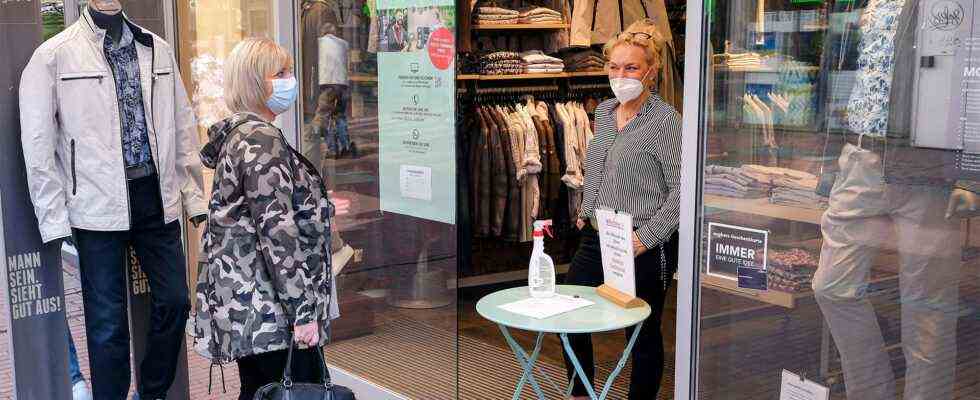Status: 07/14/2021 3:58 p.m.
The German retail sector is again looking more optimistically to the future. Although the first half of the year was lost for downtown retail, hopes rest now for autumn and winter as well as the online boom.
The German retail sector expects a slight increase in sales again this year – provided there is no new lockdown. Without further restrictions and with low numbers of infections, sales growth of 1.5 percent to 586 billion euros can be expected for the industry, said HDE Managing Director Stefan Genth.
The reason for the optimism is the increased savings rate during the pandemic. The German citizens are said to have put 100 billion on the high edge. A good part of it should end up in the retail tills. A majority of retailers therefore expect the recovery to continue in the coming months. Almost 44 percent of the dealers surveyed by the association expect an increase in sales in the second half of the year. However, not all companies in the industry are likely to benefit. Because during the pandemic, consumers increasingly made purchases on the Internet.
“The crisis is not over yet”
In fact, the retail sector, with around three million employees, offers a mixed picture – because only online retailing from Amazon to Zalando is growing rapidly. Grocery stores not affected by closings are also increasing. Outside of these industries, however, problems are increasing. The textile retailers in the city centers in particular have suffered extremely from the Corona requirements.
That is why it is too early to give the industry the all-clear, according to Genth. “The crisis is not over yet, the situation is still very difficult for many retailers,” he said in Berlin. The positive development in recent weeks should not hide the fact that the first half of the year was lost, especially for downtown retail.
50,000 stores are still threatened with extinction
According to an HDE survey, more than half of the stationary retailers expect sales for the current year to be below the previous year’s level. In the clothing trade, revenues have shrunk by around a third. Genth is therefore sticking to the prognosis that the pandemic could mean the end of up to 50,000 businesses – even if this has not yet been reflected in the insolvency figures. “We keep the prognosis upright because the retail sector is partly dying quietly,” he said. Often times, stores would simply close without bankruptcy proceedings. At the same time, large retail chains thinned out their branch networks. “You see a lot of vacancies when you walk through city centers,” emphasized Genth.
In fact, it is uncertain whether downtown retail will ever return to pre-pandemic sales. Genth himself obviously has his doubts. “There has been a shift in consumer behavior in the pandemic. Shopping has become and will remain more digital,” said the industry expert.
The association therefore assumes that online trade will increase by almost 20 percent this year, after having grown by 17 percent last year. This would increase e-commerce sales this year from 72.8 to more than 87 billion euros. The stationary retail trade, on the other hand, will probably have to accept a drop in sales of 1.1 percent for the year as a whole and will still sell goods worth 499 billion euros.

